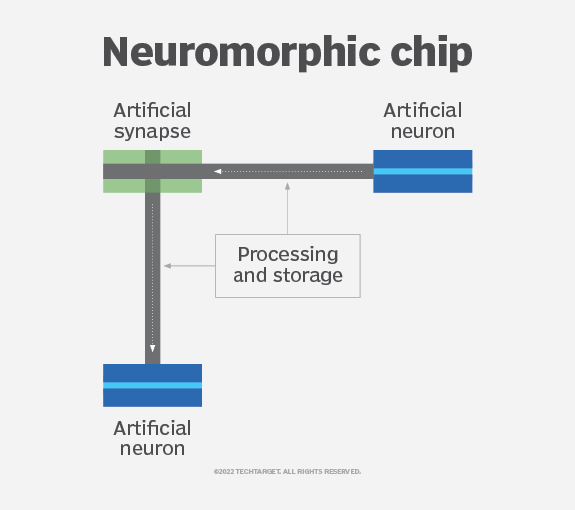Dec 14 2023
Deep South – A Neuromorphic Supercomputer
 Australian researchers at the International Centre for Neuromorphic Systems (ICNS) at Western Sydney University have announced they are building what they are calling Deep South (based on IBM’s Deep Blue). This will be the world’s largest neuromorphic supercomputer, with 228 trillion synaptic operations per second. This won’t be the fastest supercomputer in the world, which is currently reaching the exascale with quintillions of operations per second. So then what’s the big deal? It probably has something to do with the “neuromorphic” part.
Australian researchers at the International Centre for Neuromorphic Systems (ICNS) at Western Sydney University have announced they are building what they are calling Deep South (based on IBM’s Deep Blue). This will be the world’s largest neuromorphic supercomputer, with 228 trillion synaptic operations per second. This won’t be the fastest supercomputer in the world, which is currently reaching the exascale with quintillions of operations per second. So then what’s the big deal? It probably has something to do with the “neuromorphic” part.
The basic definition of a neuromorphic computer is one based on or inspired by the design of biological systems – something more closely resembling neurons and synapses. Conventional computers have central processing units and separate memory storage. But they seem to get the job done. Neuromorphic computers have components that function more like neurons and synapses which are both memory and processing at the same time. Also, the process is massively parallel and distributed. But if this is not necessarily faster than conventional computers, why bother?
There are two reasons, but the first is efficiency. The human brain is a powerful computer, and yet it operates only 20 watts of power. That is incredibly more energy efficient than any computer, and researchers believe this is because of the architecture. Right now specific computer applications use the energy of small countries. Crypto uses 127 terawatt hours per year, more than Norway. Data centers use 340 TWh. A Chat GPT query uses 15 times the energy as a normal Google query, and again is already getting to small-country levels of energy use. The AI revolution, whatever else you may think about it, is energy hungry.
By one recent estimate, using a neuromorphic computer to process the same information is 4-16 times more energy efficient than a non-neuromorphic system. If we take an average figure and say that neuromorphic computers would use about 10% of the energy of conventional computers, that is a massive change. There is obviously a cost efficiency here, but also this could be a major efficiency breakthrough in terms of mitigating global warming. The most environmentally friendly energy is the energy you don’t use. It is hard to overestimate the potential benefit here, especially as AI systems are ramping up, complete with massive energy demand.
This relates also to the other benefit of the neuromorphic design – there are some applications where they are computationally more efficient that conventional computers, not just energy efficient but faster and more powerful. You can, theoretically, simulate any computational system virtually, but that can take a massive amount of computing power and is slower. That is basically doing it the hard way (by, ironically, doing it in software rather than hardware). Designing the hardware for the specific application is just more powerful and efficient in every way.
And guess which applications the neuromorphic design is optimal for – many types of AI computing.
Deep South will be operational by April 2024, so we don’t have to wait long to see it come online. I will then want to track how it performs, both in terms of computing power and energy efficiency. If it turns out to be a successful experiment, which I hope it is, then perhaps this will accelerate massive adoption of neuromorphic computing, starting with the applications where it makes the most sense.
As a side note, I wonder if this will take some pressure of the GPU market – graphical processing unit. It turns out that GPUs are fastest when it comes to certain kinds of computing (like crypto), and so suddenly all the high end graphics cards were being bought up for these purposes, leaving us poor gamers in the lurch. Graphics cards are now harder to get and more expensive as a result. A lot of this is end users (crypto miners) which won’t be affected by neuromorphic computing (not anytime soon). But a lot is also large data centers, which can transition to neuromorphic systems.
It will be interesting to see how this pans out. But I like that we have this technological option, and it does offer some hope of avoiding the coming AI energy apocalypse.






